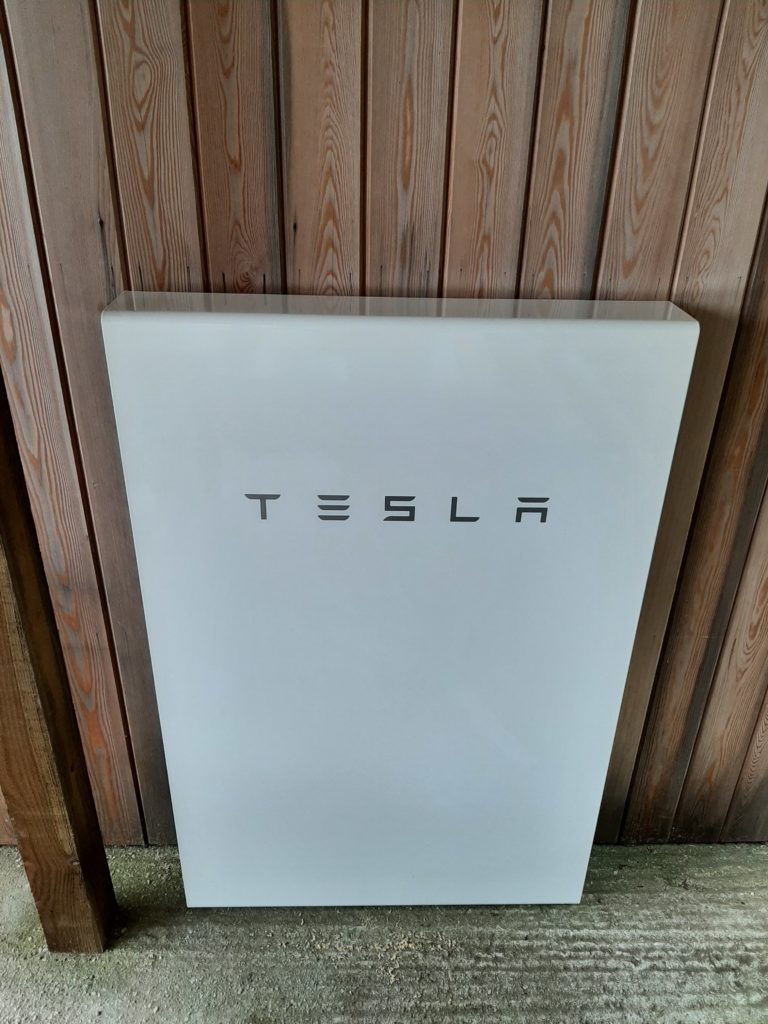
This is a case study of a Tesla Powerwall installation. It is intended to show the system components and will help those considering purchasing a Powerwall understand how it will integrate with your home.
Powerwall comprises two main parts, the Gateway and the actual Powerwall.
Tesla Gateway
The Gateway is installed close to the incoming electricity supply and connects directly to the main electricity meter. The consumer unit is then connected to the Gateway.
There are two reasons for this arrangement. Firstly it is so that the system can monitor the electricity flow to and from the house so that it can make decisions about when to charge and discharge the battery.
Secondly, the Powerwall system can maintain power during a power cut, and when it does so it must disconnect the house from the mains so that it does not backfeed into the electricity supply. It therefore contains a contactor for this purpose.
Where a backup supply is not required then the Gateway can be fitted elsewhere but we then need to install an additional device at an extra cost to monitor the electricity flows.
The Gateway is 38cm wide by 58cm high and sometimes we have to find creative ways to incorporate it where there are tight spaces. It is rated so it can go outdoors which can often help. You can download the Tesla Gateway Data Sheet here.
The Tesla Gateway has a stylish glass front bearing the Tesla logo and does not look out of place when it is installed in living spaces.

Tesla Powerwall
We are often asked to put Powerwall in a loft, down a cellar, or very high on a wall. It weighs 114kg, which should help one understand why these are impractical locations for it.
Powerwall is rated to go outdoors if necessary although it is best to avoid direct sunlight where possible. It has a hydronic temperature control system, similar to that of a car, and it can keep itself cool during the summer and even heat itself when necessary in the winter. Its temperature range is –20°C to 50°C.
Powerwall can be floor standing or can hang on a strong wall. It is 75cm wide by 115cm high and is just 15cm deep. Where more than one Powerwall is required we have the option of using a stacking kit which sandwiches up to three floor standing units together.
Where it is intended to install Powerwall in an outbuilding it should be borne in mind that it requires its own 5kW circuit which must be low impedance, and it also requires a communications cable to be connected between it and the Gateway. There is no wireless alternative for this.
You can download the Powerwall Data Sheet here.
